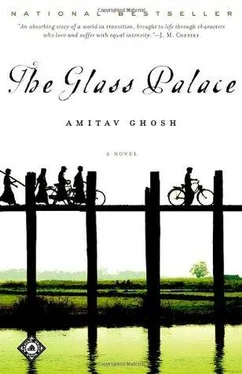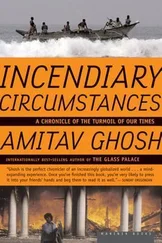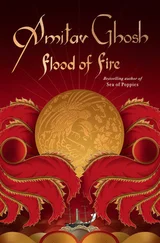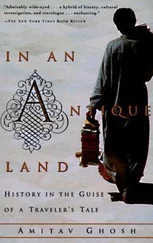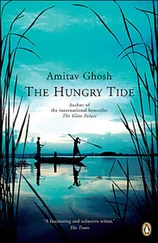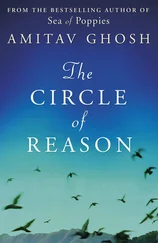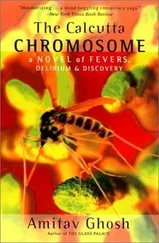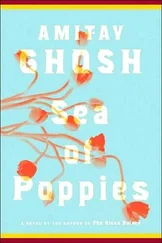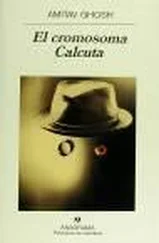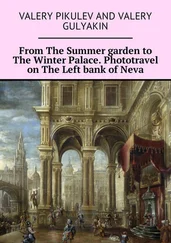‘No!’
Uma spun round, just in time to see the great golden hti of the Shwe Dagon toppling over.

Soon after this, Uma made arrangements to travel round Burma with fellow-members of the Indian Independence League. From Rangoon she went eastwards to Moulmein and then turned north to go to Taunggyi, Toungoo, Meiktila and Mandalay. Everywhere she went she could see signs of a widening rift between Indians and their Burmese neighbours. Amongst students and nationalists an agitation was under way to separate Burma’s administration from that of British India. Many Indians saw this as a cause for alarm, believing that their safety would be threatened by a separation.
Uma was riven by this controversy: she sympathized with the fears of the Indian minority and yet it troubled her that they believed their safety lay in what she saw as the root cause of the problem — the pattern of imperial rule and its policy of ensuring its necessity through the division of its subjects. On returning to Rangoon, Uma was quick to offer Dolly an apology: ‘Dolly, I hope you’ll forgive me for treating your fears so lightly. I can see now that there’s a lot to worry about. Frankly I feel utterly confused. .’
A few days before her departure for Calcutta, Uma went for an early morning drive with Dolly in the grey Packard. They went first to Rangoon’s Churchill Road, to look at the house where Queen Supayalat had died, a few years before.
‘Did you ever see her again, Dolly?’ Uma asked.
‘No.’ Dolly slowly shook her head. ‘As far as she was concerned, I was in the same boat as the Second Princess: banished for ever from her presence.
On the way back, they drove past the Sule Pagoda and found the streets unusually quiet for that time of day. ‘I wonder why there are no rickshaws, no hawkers. .’ Dolly paused to look around. ‘How odd: I can’t see a single Indian on the street.’
In the distance, at a street corner there was a long line of men. As the Packard rolled past, they saw that the men were queueing to have tattoo-like designs painted on their chests. Dolly’s reaction was instantaneous. She leant over to shake U Ba Kyaw’s shoulder.
‘Dolly — what’s the matter? What’s happening?’
‘We have to turn round. We have to go back — back to the house.’
‘Because of those men? Why? Does it have something to do with those tattoos?’
‘Those weren’t tattoos, Uma. Those designs were for soldiers who’re going to war. .’ Dolly began to drum her fist distractedly on her knees. ‘I think there’s going to be some kind of trouble. We have to find out where the boys are— where Rajkumar is. If we’re quick maybe we’ll be able to stop them leaving the house.’
Some twenty yards ahead of the Packard, a man leapt off a footpath and ran into the street. Uma and Dolly noticed him when he appeared in one corner of the Packard’s wide, curved windscreen. He was an Indian, a rickshaw-puller, dressed in a tattered vest and a longyi. He was running hard and beads of sweat were flying off his arms. One of his hands was clawing the air, and the other was holding up his longyi, keeping it from getting entangled in his legs. His face was dark and his eyes very white and bulbous. Two steps carried him from the edge of their windscreen to its middle; he turned to glance over his shoulder and his eyes started in his head. Now they saw that he was being closely pursued by a man who was just two steps behind him. This man was bare-bodied and a black design was painted over his chest. He was carrying something but they couldn’t see what it was, because it was hidden beneath the edge of their windscreen. Then, all of a sudden, the pursuer swung his shoulders and drew his arms back, in the manner of a tennis player preparing to make a stroke. They saw now that the instrument in his hands was a da, a long, glinting blade with a short handle, part sword, part axe. They sat transfixed in their seats as the da scythed through the air in a circular motion. The rickshaw-puller had almost reached the far end of their windscreen when suddenly his head toppled over like a lopped-off branch, hanging down over his spine, held on by a thin flap of skin. But the body did not fall instantly to the ground: for a fraction of a second the decapitated trunk stayed upright. They saw it advance by one more step before crashing to the pavement.
Uma’s first impulse was to reach for the door handle. ‘What are you doing?’ Dolly screamed. ‘Stop.’
‘We have to help, Dolly. We can’t just leave him on the street. .’
‘Uma, have you gone mad?’ Dolly hissed. ‘If you get out of the car now, you’ll be killed too.’ She gave Uma a push, thrusting her on to the floor of the car. ‘You have to hide, Uma. We can’t run the risk of your being seen.’ She made Uma lie flat and then ripped the cloth covers off the Packard’s back seat. ‘I’m going to cover you with these. Lie still and don’t say a word.’
Uma put her head down on the floor-mat and closed her eyes. The rickshaw-puller’s face appeared in front of her: she saw his head once again, toppling backwards. In that instant when the decapitated body had still been upright, still moving forward, she had caught a glimpse of those white eyes, hanging down over his spine: their gaze had appeared to be directed into the car, right at her. Uma felt her gorge rise and then vomit came pouring of her mouth and her nose, fouling the floor-mat.
‘Dolly.’ Just as she was beginning to raise her head, Dolly gave her a sharp nudge. The car came to a sudden stop and she froze, with her face inches from the vomit-covered mat. Somewhere above Dolly was talking to someone — a group of men — she was explaining something in Burmese. The conversation took just a minute or two, but an eternity seemed to pass before the car moved on again.

The riots lasted several days and the casualties numbered in the hundreds. The toll would have been higher still, if it had not been for the many Burmese who had rescued Indians from the mob and sheltered them in their homes. It was discovered later that the trouble had started with a clash between Indian and Burmese workers at the docks. Many Indian- and Chinese-owned businesses were attacked, among them one of Rajkumar’s timberyards. Three of his workers were killed and dozens were injured.
Rajkumar was at home when the trouble broke out. Neither he nor anyone else in the family suffered any personal injury. Neel happened to be safely out of town when the riots started, and Dinu was taken home from school by his friend, Maung Thiha Saw.
Despite his losses Rajkumar was now more adamant than ever about remaining in Burma: ‘I’ve lived here all my life; everything I have is here. I’m not such a coward as to give up everything I’ve worked for at the first sign of trouble. And anyway, what makes you think that we’ll be any more welcome in India than we are here? There are riots in India all the time — how do you know that the same thing wouldn’t happen to us there?’
Uma saw that Dolly was near collapse and she decided to stay on in Rangoon, to help her cope. A week became a month and then another. Every time she spoke of leaving Dolly asked her to stay on a little longer: ‘It’s not over yet— I can feel something in the air.’
As the weeks passed, there was a deepening of the sense of unease that had settled on the city. There were more strange events. There was talk of trouble at the Rangoon Lunatic Asylum, where several thousand homeless Indians had been accommodated after the riots. In the city gaol a mutiny erupted among the prisoners and was suppressed at the cost of many lives. There were whispers of an even greater upheaval in the offing.
Читать дальше
Конец ознакомительного отрывка
Купить книгу
